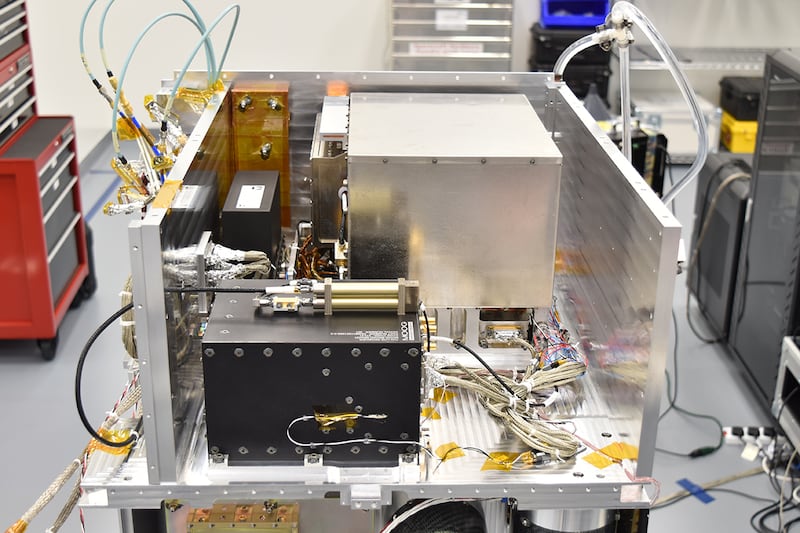An atomic clock that was launched into orbit with an aim to revolutionise deep-space navigation is up to 10 times more stable than existing space clocks, according to scientists.
Developed at Nasa’s Jet Propulsion Laboratory (JPL), the Deep Space Atomic Clock (Dsac) blasted off in 2019 as part of a mission to investigate its accuracy in space.
Now scientists led by Eric Burt at the California Institute of Technology in the US have found that the clock’s short-term as well as long-term stability exceeds that of current space timepieces, based on a year’s worth of data.
Writing in the journal Nature, the researchers noted: “The Deep Space Atomic Clock is particularly amenable to the space environment because of its low sensitivity to variations in radiation, temperature and magnetic fields.
“This level of space clock performance will enable one-way navigation in which signal delay times are measured in situ, making near real-time navigation of deep space probes possible.”

Atomic clocks are considered the gold standard for timekeeping.
These clocks measure the precise frequencies of light emitted by specific atoms, using them to regulate the time kept by more traditional clocks.
While current ground-based atomic clocks are fundamental to deep space navigation, they are too massive to be flown in space.
This results in tracking data being collected and processed here on Earth for most deep-space probes – in a two-way system that is time consuming.
But if probes carried their own atomic clocks, this two-way system could be reduced to one-way, and onboard computers would make all the necessary calculations.
This is where Dsac comes in.
Our Deep Space Atomic Clock, like a GPS for navigating the solar system, is a @NASA_Technology demo launched in June 2019. The mission has been extended through August 2021 so its team can continue testing and improving the clock's stability: https://t.co/GKJrIbaBox pic.twitter.com/d4JZv7QTpx
— NASA (@NASA) June 25, 2020
About the size of a shoebox, it is a miniaturised atomic clock that has been customised for spaceflight.
After Dsac was activated in 2019 a few months after launch, Todd Ely, principal investigator of the project at JPL, said: “The goal of the space experiment is to put the Deep Space Atomic Clock in the context of an operating spacecraft — complete with the things that affect the stability and accuracy of a clock — and see if it performs at the level we think it will: with orders of magnitude more stabile than existing space clocks.”
Meanwhile, the researchers say that Dsac has a life expectancy of around three to five years, but work is being done to extend this to 10 years or beyond.
The team wrote: “We have demonstrated a trapped-ion atomic clock operating in space.
“Clock operation was fully characterised over a nine-month period, and long-term operation will continue through the remainder of the two-year mission.”








